A collection of photos I took of a freshly eclosed (hatched) polyphemus moth.
This will be my first contribution to this Photofeed community, which I'm happy to be a part of. I have thousands of photographs from my 10 years in photography that I'm excited to start sharing here! 📸
But this post will focus mostly on just this one polyphemus moth, one of many tens of thousands that I've bred and raised from eggs to adults.
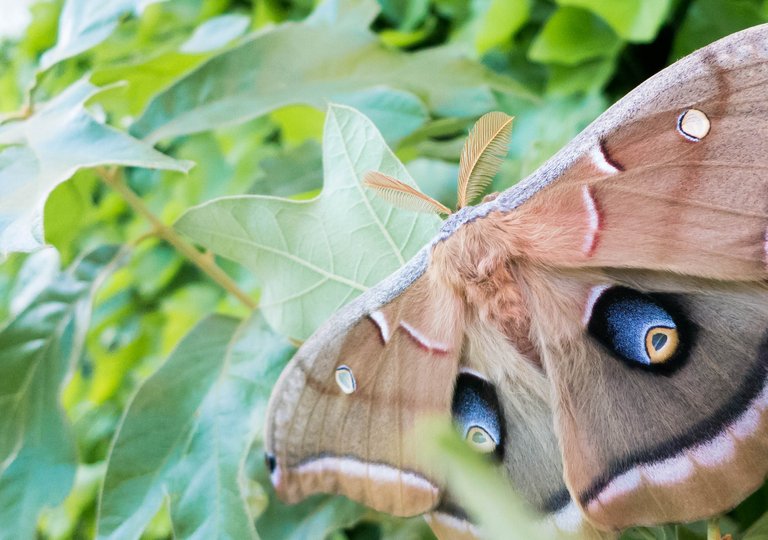
This is probably my favorite image that I've taken of a polyphemus along with his host plant; the oak leaves that the larvae feed on.
All of these moth photos are pictures I took of the same single adult polyphemus moth one afternoon out in the yard.
But I thought it might be interesting to include some photos I took of the earlier stages too:
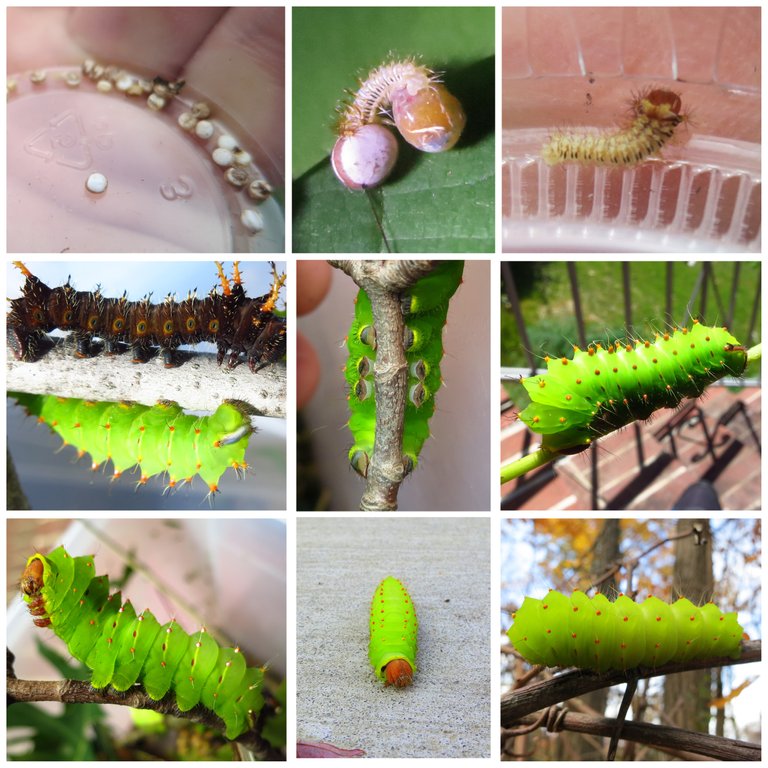
From eggs, to hatchling larvae which eat their own eggshell before moving on to devour the leaves of their host plant. The larvae move through several "instars"-- stages of larval development punctuated with the shedding of their old skin, with occasional changes to their markings, color, and size as they progress. In the final instar, when they are finished eating, the larva will drop down from their tree and wander away to find a place to shed its skin one last time after enclosing itself in a cocoon of silk.
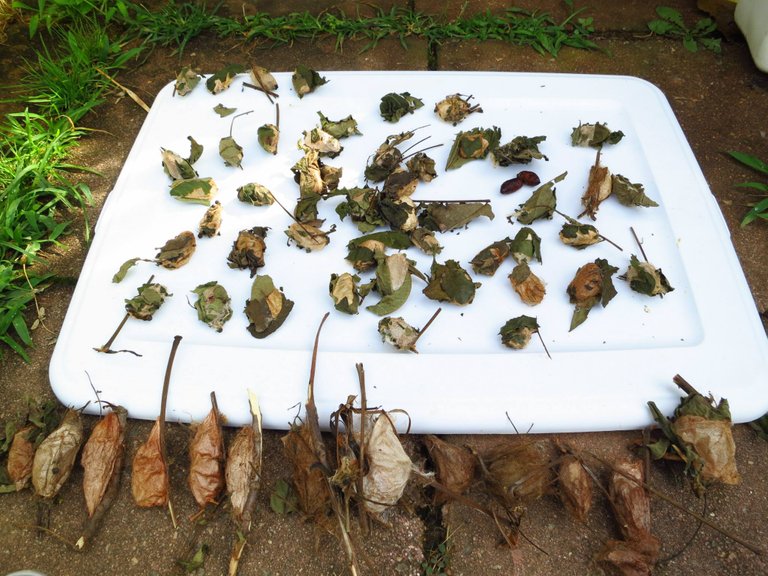
These are a variety of cocoons, with large cecropia moths on the bottom, some polyphemus cocoons mixed in with luna moths and other species on the plastic lid.
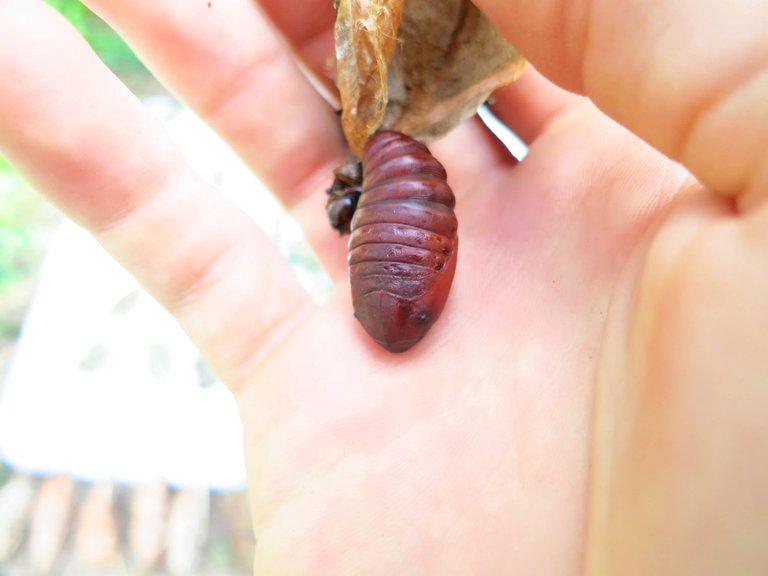
The critter inside of the cocoon is the pupa, which can be cautiously removed without harming it. I haven't taken a lot of images of the cocoon stage, but this image which is actually a different species of "Saturnid" (Giant Silk Moth) will have to do. But you get the idea, there's the cocoon, and the dormant critter inside.
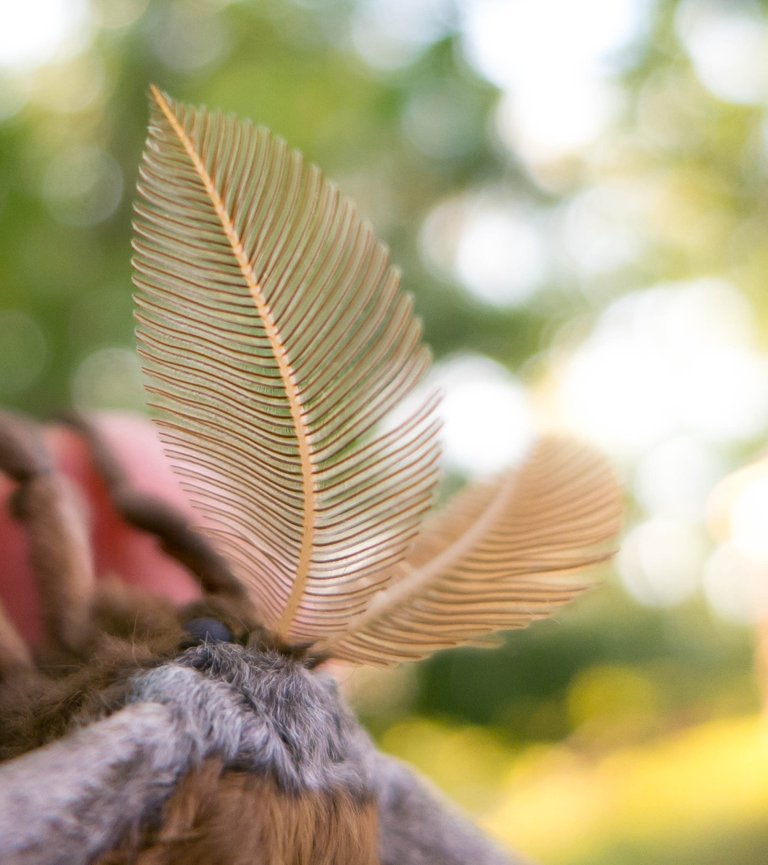
Ok, back to the images of this one particular Polyphemus moth. The antennae of this male are used to locate the females, who sit still after hatching from their cocoon and "call" males from many miles around to mate using pheromones. The males, like this one, fly very long distances late at night, following the scent of pheromones for miles until they can locate the female and attach to her and mate.
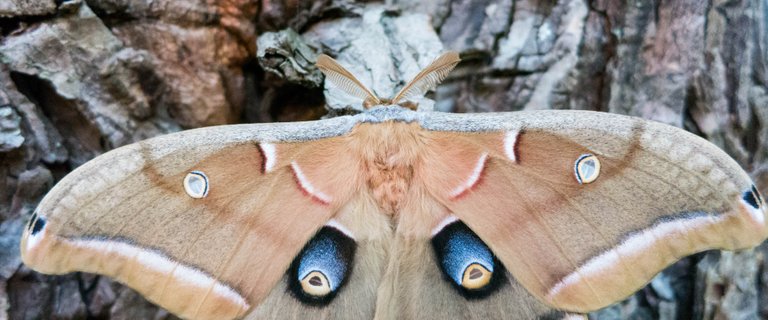
The large "eyespots" on the wings are thought to have been naturally selected to intimidate potential predators.
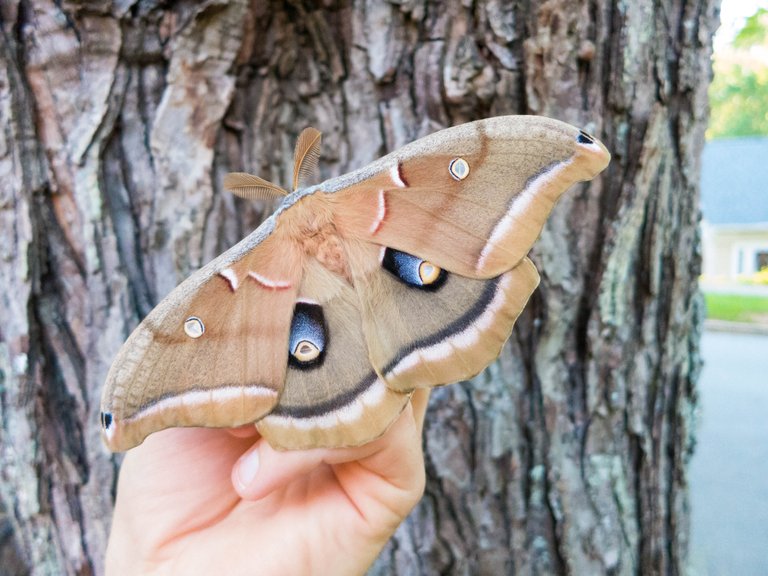
When threatened they will often just lie flat with their wings open to display their eyespots.
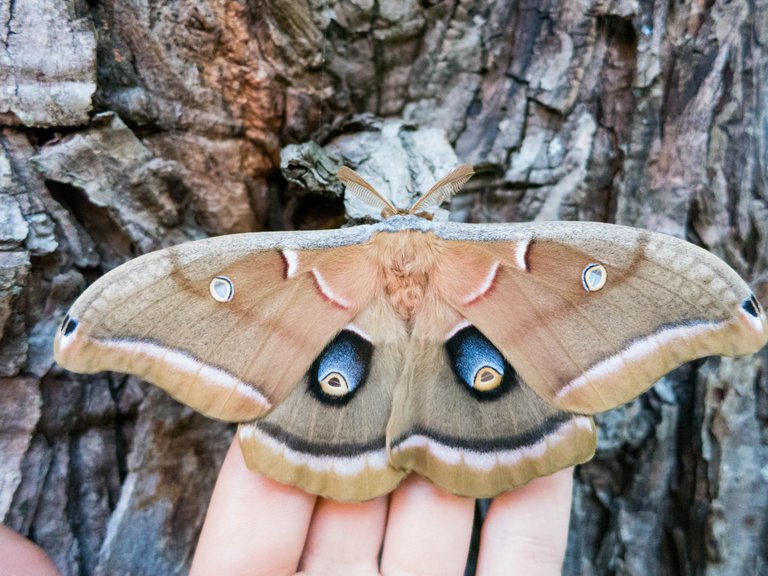
Thanks for taking a look and giving me upvotes. I have a lot more pictures that I'm excited to start sharing here! 😁📸🐛